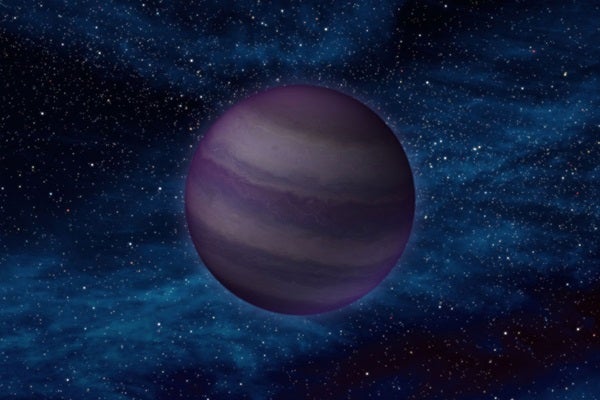Computer simulations suggest that if a more massive object, like a brown dwarf (which contains the mass of dozens of Jupiters), orbited the Sun instead of Jupiter, it would have been harder for Earth and the other terrestrial planets (Mars, Venus, and Mercury) to have formed. So under these circumstances, there might not even be an Earth.
Alternatively, if a planet formed at roughly Earth’s distance from the Sun in this system with a brown dwarf, it might be much smaller than the actual Earth. Such a small planet likely would have lost its oceans early on because smaller planets have lower escape velocities and easily lose hydrogen and other gases to outer space. Because of these losses, a small Earth could have easily become dry and barren.
That said, it doesn’t seem entirely impossible for life to have formed under these circumstances. Certain extremophile bacteria, for example, can persist in arid environments. And there is a slim chance that a terrestrial planet of the proper size could have formed and scattered into just the right stable orbit, even in the presence of the brown dwarf. But I would bet that if Jupiter were as massive as a brown dwarf, life in the solar system would be very different from what we know today. — Marc Kuchner, NASA’s Goddard Space Flight Center, Greenbelt, Maryland
Alternatively, if a planet formed at roughly Earth’s distance from the Sun in this system with a brown dwarf, it might be much smaller than the actual Earth. Such a small planet likely would have lost its oceans early on because smaller planets have lower escape velocities and easily lose hydrogen and other gases to outer space. Because of these losses, a small Earth could have easily become dry and barren.
That said, it doesn’t seem entirely impossible for life to have formed under these circumstances. Certain extremophile bacteria, for example, can persist in arid environments. And there is a slim chance that a terrestrial planet of the proper size could have formed and scattered into just the right stable orbit, even in the presence of the brown dwarf. But I would bet that if Jupiter were as massive as a brown dwarf, life in the solar system would be very different from what we know today. — Marc Kuchner, NASA’s Goddard Space Flight Center, Greenbelt, Maryland










